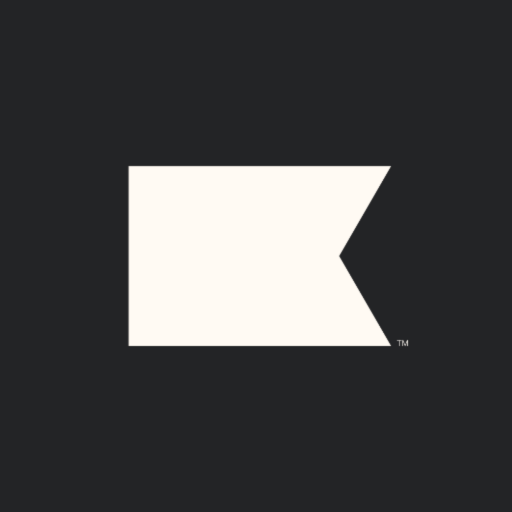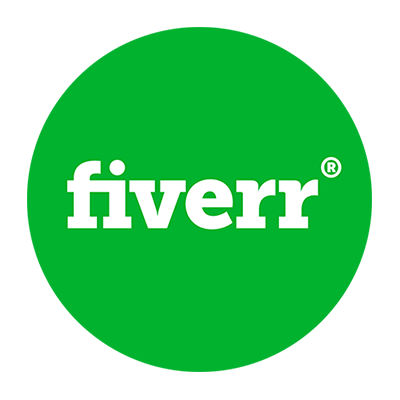
How I Started A $80K/Month B2B Sourcing Portal For The Fashion Industry
Hello! Who are you and what business did you start?
Hi, I am Apaar from New Delhi, India and I am the founder of The Design Cart. I am a typical IT engineer + MBA grad and have worked with 2 of the largest Indian startups before starting my venture. The Design Cart is an online B2B sourcing portal for the fashion industry working with fashion designers, studios and apparel brands to help them source their raw material. We are currently operational only in India and help the fashion industry source textiles, fabrics, accessories, and trims, while also reducing their procurement timelines & costs by over 30%.
Our online store has been live since January 2018 and it’s been 2 years since I have been running this venture. Operationally we are sort of a marketplace like Amazon but only in the fashion supply vertical. We work as a managed marketplace and have deployed proprietary technology on the backend to ensure seamless operations which is the single most important function in many to many marketplace models which can either make or break your company.
Currently we work with some of the top fashion & jewelry designers of India along with some Marquee apparel brands. Our monthly turnover just touched $80k+ in Feb’ 2020 till the Covid-19 crises emerged and shut everything down. Over the past 2 years we have serviced over 20,000+ unique designers & brands globally. On the other side our supply network has been expanding at a rapid pace and our technology is now deployed at over 200 large scale manufacturers and traders in India.

What's your backstory and how did you come up with the idea?
Post my MBA, I worked at 2 large startups for 4 years in a mid-senior management role. During this period, I had built 2 business units from scratch - right from hiring & managing the team, to managing the tech side, managing the client, and eventually driving revenue. The initial 4 years gave me a great sense of what it will be like to run my own venture. I sensed that I loved solving problems, executing solutions, and the feeling of driving great results from them. I had been harboring an entrepreneurial bug for a long time, but, never in my adult life had taken any action on it.
Building a two-sided marketplace was always going to be a treacherous journey and a typical chicken and egg story. The supply won’t come unless you have enough demand and the demand won't look at your platform till you have enough supply.
My family business has been closely associated with the fashion industry for the past 30 years, and The Design Cart was started by me as a weekend gig just to help them get an online presence and have supplementary revenue.
Alongside my full-time day job, in the first 6 months, I learned how to build a website, clicked 1,000s of product images, cataloged them, and started reaching out to my prospective clients. I started spamming various Facebook groups around fashion design, embroidery, apparel designing, beading, etc and that's how I got my first few customers. However, the real breakthrough came when I started setting up in-person meetings with fashion designers.
Every weekend I would have meetings and within 6 months I had met 800+ fashion designers from across the country. There was a common thread of feedback amongst them - procurement of raw supplies is a real problem and there did not exist a tech-enabled solution for this. It was this raw feedback that eventually motivated me to leave my well paying “settled” job and start my venture.
I took about 2 months to mentally condition myself and prepare my family for some financial uncertainty and finally in November 2017, I left my job to work full time on this opportunity. On a lighter note, I actually asked my wife to grant me an extended furlough of 3 years to jumpstart my venture and grow it into a global business. She generously agreed.
Take us through the process of designing, prototyping, and manufacturing your first product.
A big challenge I faced initially was to convince sellers & manufacturers to work with us. We are talking about businessmen who have traditionally worked offline and are so used to their existing methods, that there is a massive resistance to change. It was especially difficult to earn their trust in the initial few months. 8 out of 10 sellers we tried convincing turned us down.
What kept me going was that I knew in my head that we were trying to digitize an entire supply chain and hence the challenges had to be enormous. I used to find contact information of initial manufacturers and sellers online, cold-called them, and had plenty of walk-in meetings. There were plenty of rejections I faced during this period where people told us our business model was flawed and it won't work out etc, etc. But I kept persevering knowing in my head that digital was the way forward and the industry will change sooner than later and I wanted to be a part of it.
The initial 6 months were spent in creating digital catalogs of all of these products. I zeroed down on working on Shopify because of multiple advantages that the platform offered. I had all the advantages of having an in-house tech platform at a fraction of the overall cost. I got my company registered as per Indian Company Law and by Jan’ 2018 we had done a hard launch - 6 months after I started working on my idea. At that time I had only a handful of sellers and a few thousand products on the platform.
Building a two-sided marketplace was always going to be a treacherous journey and a typical chicken and egg story. The supply won’t come unless you have enough demand and the demand won't look at your platform till you have enough supply. I figured that the only way to crack this particular conundrum is to relentlessly run behind both the demand and supply at a frantic pace. Essentially you have to be chasing both equally important bits to your business.
Describe the process of launching the business.
I clearly remember the first day of the hard launch, we had zero sales that day. I had not yet started paid marketing and at the end of the day, I was a little astounded, but figured that this was just the start and the journey ahead was going to be long and arduous. What I knew in my head was that if I keep persevering towards my goal of solving key pain points for my customers, sales are not going to be a problem at all. I kept adding products to my inventory and grew it to 5,000+ products.
My first hire was a sales guy because I figured that physically reaching out to Designers & Merchandisers would be important. I ran this pilot with 1 sales guy for the first 2 months, we had initial successes but a lot of to & fro. A few customers ordered and did not end up paying, quality control became a concern as we kept adding more sellers and products to our platform, and customers started asking for credit terms for payment which the company couldn't afford at that point in time.
After 3 months of trying different offline strategies we pivoted onto a digital-first, online-only model where my idea was to make our value proposition so compelling that customers would be attracted massively to our portal. Once I started working on paid marketing campaigns & executed a detailed SEO strategy, is when I started seeing real customers flowing into the platform and transacting with us. It was at least another 2 months before I started seeing a steady flow of customers. B2B eCommerce in niche segments can be extremely tricky in India.
I financed my business initially with some of my savings. When that started getting exhausted, I leaned on my father to invest some money into the company and that’s what got the ball rolling.
A majority of our costs went into marketing and shipping. It took me almost 10 more months to figure out a great online marketing strategy where a combination of Google Adwords & Social Media Marketing started giving real results. For any online eCommerce business it is critical to keep your ROAS maintained to run a sustainable business. Once we had that figured out in the first 12 months, we really started scaling up.
Since launch, what has worked to attract and retain customers?
What has really worked well for us is the fact that we found an unaddressed niche within a broader market. I was able to generate this insight and the conviction to go behind this market when during the first 6 months, I personally spoke to 800+ fashion designers and understood the procurement challenges they face. Once I had that insight and a tech solution enabled to solve the problem, it was about scaling both sides of the marketplace parallelly.
What kept me going was that I knew in my head that we were trying to digitize an entire supply chain and hence the challenges had to be enormous.
We have been going behind our audience by generating prospective traffic via highly targeted longtail advertising on Google Adwords. We target plenty of technical terms and product categories on Adwords which will only be searched by the fashion design industry. As soon as the customer lands on the website, we then start retargeting them extensively via remarketing on Facebook & Instagram. And this strategy of creating new prospective audience everyday via Adwords and then retargeting them on Social Media channels has worked really well for me. It has created a constant loop of audience.
I also experiment a lot with generating new audiences on social media channels with certain detailed targeting tools available. Our secret sauce has been to constantly tweak our online marketing strategy and find the right audience for our platform.
Another great touchpoint for us has been constant Whatsapp communication with our clients. Since we are a B2B portal, it was important for us to have a personal touchpoint where we constantly advise our customers on fashion, trends, and latest design techniques. This touchpoint has really helped us gain the trust of our customers which is why they tend to come back to us time and again for repeat purchases.
How are you doing today and what does the future look like?
We have been EBITA positive for the past 6 months. Our customer acquisition costs have gone down by 20% over the past 12 months as we have been continuously optimizing for this. Our shipping costs have also dropped off by 10% as we have optimized our shipping partners' basis serviceability across India. A rough breakup of the unit economics is as follows
- Sale Amount - 100
- COGS - 60
- Cust Acquisition - 20
- Shipping - 11
- Net Profit per Order - 9
The average return on ad spend on google is about 2.1x while on Facebook is about 4.3x. The website hit monthly traffic of 200k visitors in Feb.
We plan to immediately launch a frontend portal for the United States by May end as we are getting a lot of inbound requests and orders from American Fashion Designers and smaller American Brands.
Through starting the business, have you learned anything particularly helpful or advantageous?
The biggest lesson I have learned from these 2 years is that none of the challenges are impossible to conquer. It’s just a matter of time. As an entrepreneur, you have to be willing to spend time experimenting with creative ways to solve problems. I have developed my own way to visualize this.
Everytime I face a new challenge in my venture, I imagine a red brick wall in front of me, and to succeed as an entrepreneur I need to tear down multiple such walls. Figuratively, this means, I need to hit the wall at multiple places to find its weakest spot. This is the time consuming (*read perseverance) bit. Once you find the weak spot, you hit it with all your strength until the wall breaks down and you can move onto the next wall. This has worked 100% with me each time and every time I have felt down-trodden or disappointed. It's only a matter of how much time are you willing to spend to find that weak spot in the wall.
A couple of things that worked in my favor were early insights and key understanding of customer behavior for the fashion & apparel industry as well as the fact that from day 1, I was super focused on keeping costs low and turning this into a profitable E-Commerce venture. Too many new E-Commerce ventures fail early on due to ballooning marketing and shipping costs. I ensured the pricing was structured in such a way so that both my suppliers and the company were able to drive sustainable profits.
I think I have also learned a lot about managing people during this period. Managing an expanding team of young energetic people and balancing their expectations while trying to grow the top line is quite a challenge. You need to be able to groom your team and show them a vision for the company and enroll them in your vision. Once the team is aligned on the vision for the company, it can collectively perform wonders. In a post COVID world, once we restart our operations, I think I will want to micromanage my team a lot less and focus only on the bigger picture. A lot of my initial time was spent on debottlenecking the micro issues.
What platform/tools do you use for your business?
- Managing Frontend & Customers - Shopify
- Backend Ops - Developed an in-house tool
- Marketing - Google Adwords & Facebook Marketing
- Shipping - Multiple partners in India - all integrated into our backend.
- Email - Mailchimp & Klaviyo
- Social Media - Buffer
- CRM - Freshdesk
- Freelance Platforms - Fiverr, freelancer.com
What have been the most influential books, podcasts, or other resources?
I really enjoy reading about other super successful entrepreneurs and visionaries and the kind of challenges they had faced in their lives and how perseverance was such an important part of their characters. Recently I finished reading Shoe Dog (Phil Knight - Nike) and he is such an inspiring story of ups and downs which inevitably, every entrepreneur has to go through.
Advice for other entrepreneurs who want to get started or are just starting out?
I think its important to realize early on that doing is better than thinking, and you will never have the perfect opportunity or plan. I see a lot of people harboring entrepreneurial ambitions and some of them have great ideas, but they are waiting for that perfect opportunity or that perfect business plan.
It’s critical to remember that the most opportune moment is NOW and the best business plan is what can you execute TODAY. A large part of the journey is figuring out solutions as you go along the path. There will always be teething issues. Sometimes cash flow will be bad, other times demand will dip or tech might fail, but it’s important to internalize your final destination and keep a razor-sharp focus on it and even if you have a rough path to achieving it, you will be able to figure out ways and means to solve all other issues that crop up along the path.
Are you looking to hire for certain positions right now?
I am always looking to hire smart and driven folks who like to take responsibility and learn to deliver results along the way. I am currently looking to hire a full-time digital marketeer, full-time operations analyst, and a business analyst. If you think you like what we are doing, feel free to reach out to me on [email protected].
Where can we go to learn more?
If you have any questions or comments, drop a comment below!

Download the report and join our email newsletter packed with business ideas and money-making opportunities, backed by real-life case studies.

Download the report and join our email newsletter packed with business ideas and money-making opportunities, backed by real-life case studies.

Download the report and join our email newsletter packed with business ideas and money-making opportunities, backed by real-life case studies.

Download the report and join our email newsletter packed with business ideas and money-making opportunities, backed by real-life case studies.

Download the report and join our email newsletter packed with business ideas and money-making opportunities, backed by real-life case studies.

Download the report and join our email newsletter packed with business ideas and money-making opportunities, backed by real-life case studies.

Download the report and join our email newsletter packed with business ideas and money-making opportunities, backed by real-life case studies.

Download the report and join our email newsletter packed with business ideas and money-making opportunities, backed by real-life case studies.

















